
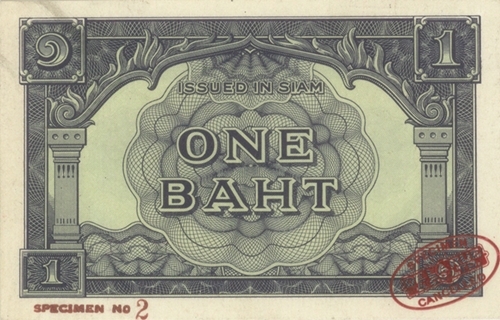
One of the currency notes, which stands out from the other series, is the 1-Baht note, which was announced June 3, 1946. The note was produced by Thomas de da Rue & Company Limited, London (TdlR) and ordered by St. Luke’s Printing Works (Bank of England) on behalf of the War Office.
During that period the Japanese Imperial Army controlled the economy in Siam which also included the circulation of banknotes. So, in 1945 the Allied Forces set a plan in motion to print new 1-Baht notes which would look very different to the ones in use. They would then circulate these new banknotes in those areas that they seized back from the Japanese as a symbol of liberation.
This plan was kept secret from the Siamese Government, as they did not want their invasion strategy leaked to the Japanese.
On August 20, 1945, the War Office planned to produce 7 different denominations.
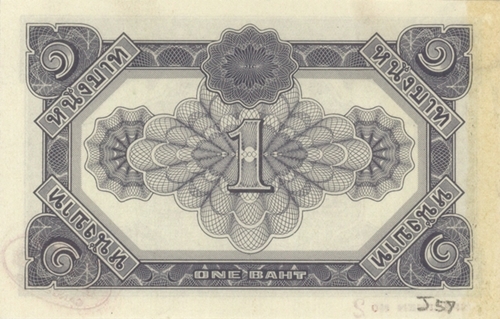
25 Satang – 10 million pcs
50 Satang -12 million pcs
1 Baht – 100 million pcs
5 Baht – 60 million pcs
10 Baht – 30 million pcs
20 Baht – 15 million pcs
100 Baht – 1 million pcs
The face value for all the planned notes printed amounted to Baht 1,108,500,000. – (Over 1 Billion Baht).
These quoted numbers are validated by of a letter dated January 16, 1946 written by St. Luke’s Printing Works to Thomas de da Rue & Company Limited.
Though photographic gravure for all the denominations (except for 50 satang) were produced and approved by the British War Office, but as far as I know the original artwork was produced for the 1 Baht and 100 Baht note only.
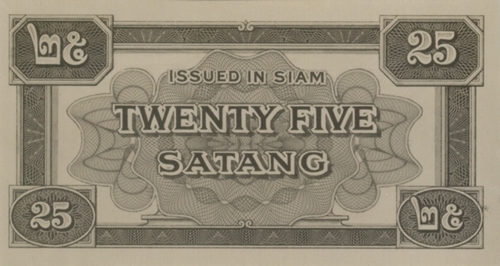
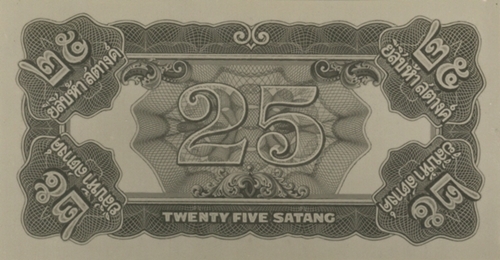
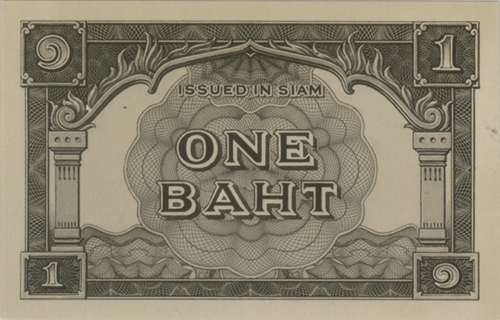
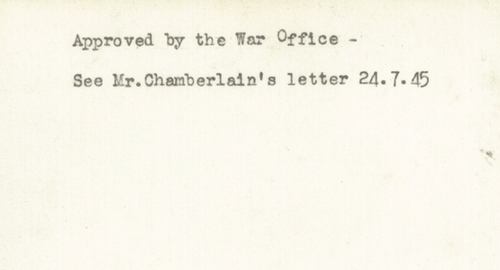
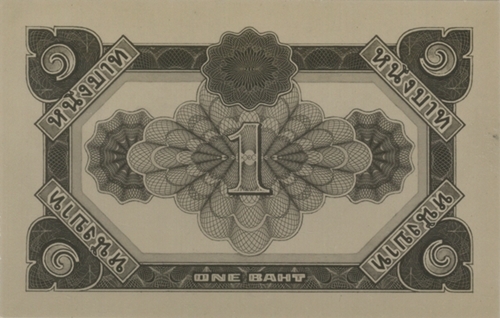
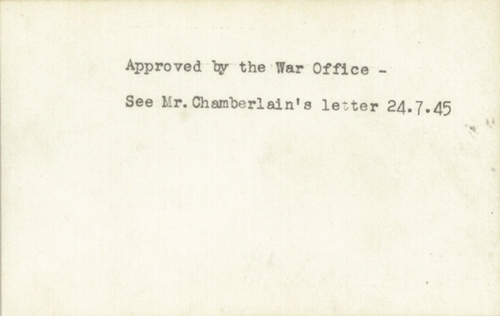
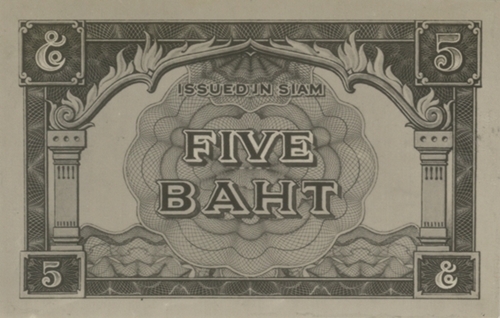
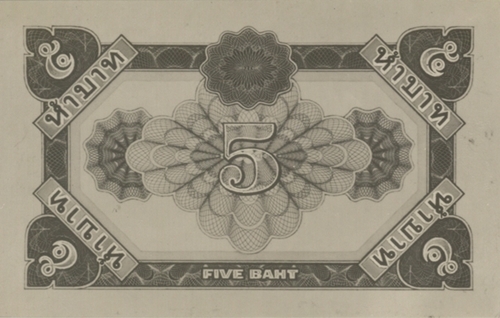
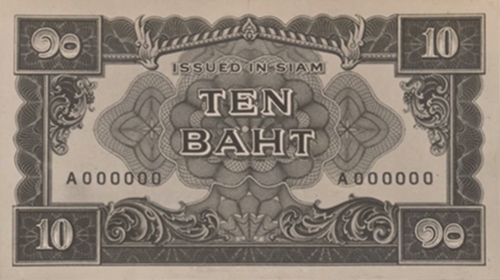
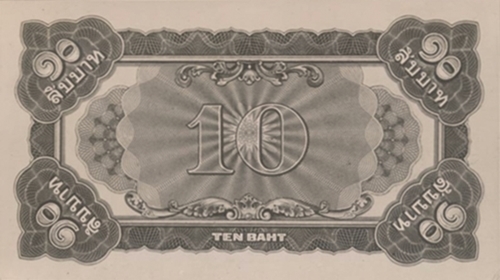
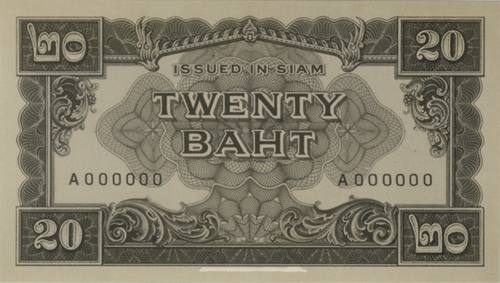
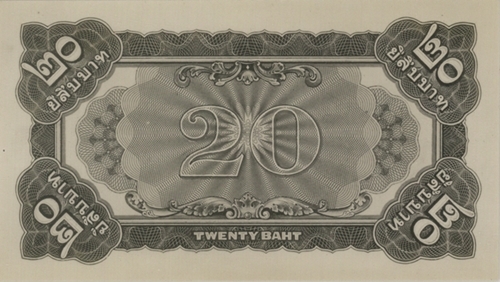
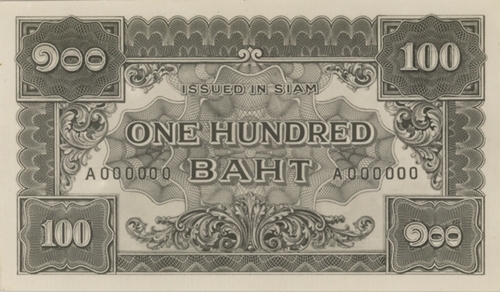
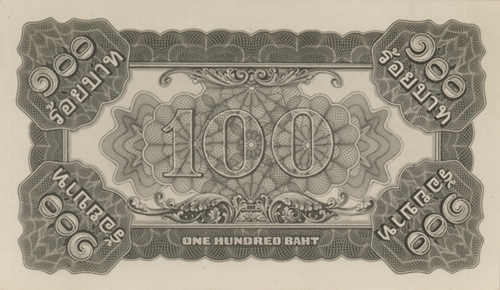
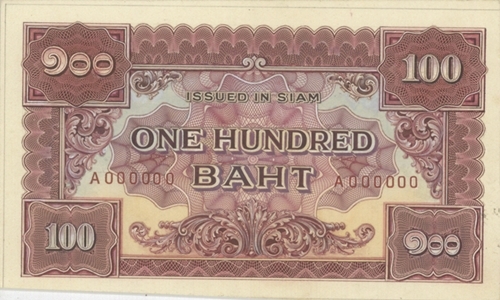
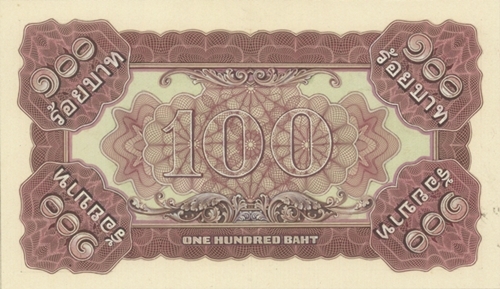
On August 10, 1945 St. Luke’s Printing Works (Bank of England) gave instructions to Thomas de da Rue & Company Limited, London (TdlR) to print 10 million 1-Baht notes.
The other denominations were never printed. Thus the 1-Baht note is the only note that was actually printed.
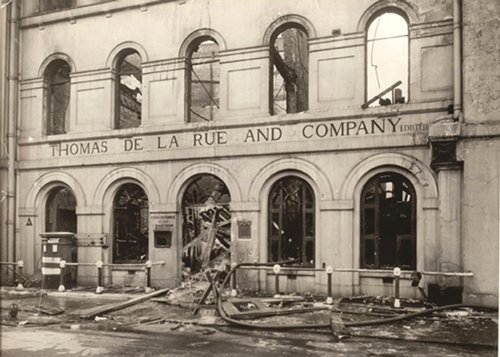
On January 24, 1946 TdlR presented a quotation for the printing of 1, 5, 10, 20 & 100 baht notes, but apparently because the war had ended, there was no more need for the Invasion Notes, so the plan was put on hold.
After the war, the Siamese Government was in urgent need of banknotes, but TdlR was unable to print any notes for Siam at that time. Sadly, during the war, their building in London, where the printing press was located, was heavily damaged by aerial bombardment, incapacitating their production capabilities immensely. Another reason was, they had a prior commitment to fulfil a very large order from China.
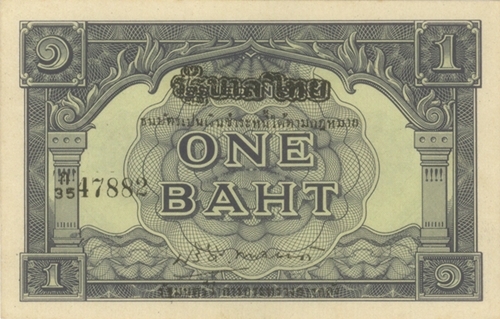
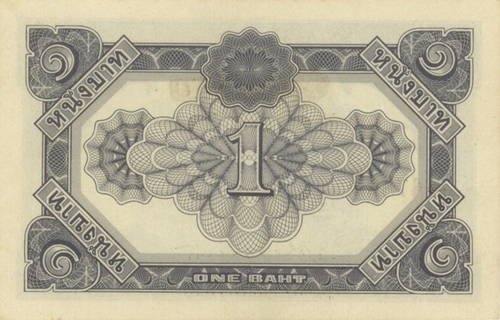
The Siamese Government learned that there were already 10 million 1-Baht Invasion Notes printed. They requested the British War Office to give them the notes, which were put into circulation on June 3, 1946.
But before the notes were put into circulation, a small change was made. The words, ‘Thai Government’ were superimposed over the words ‘Issued in Siam’. Below that, the words ‘This note is legal tender in accordance with the law’ were embossed.
Thank you to Pratheep S. Malhotra and Bank of Thailand Museum.
References:
The archives of Thomas de la Rue & Company Limited, London.
Bank of Thailand “Centenary of Thai Banknotes: 1902-2002”
Somchai Saeng-ngern, “Thai Banknotes Catalogue, Complete and Updated Edition”.
All illustrations from Jan Olav Aamlid collection.
Copyright© 2020 All rights reserved by Jan Olav Aamlid.

 |
 |
 |





